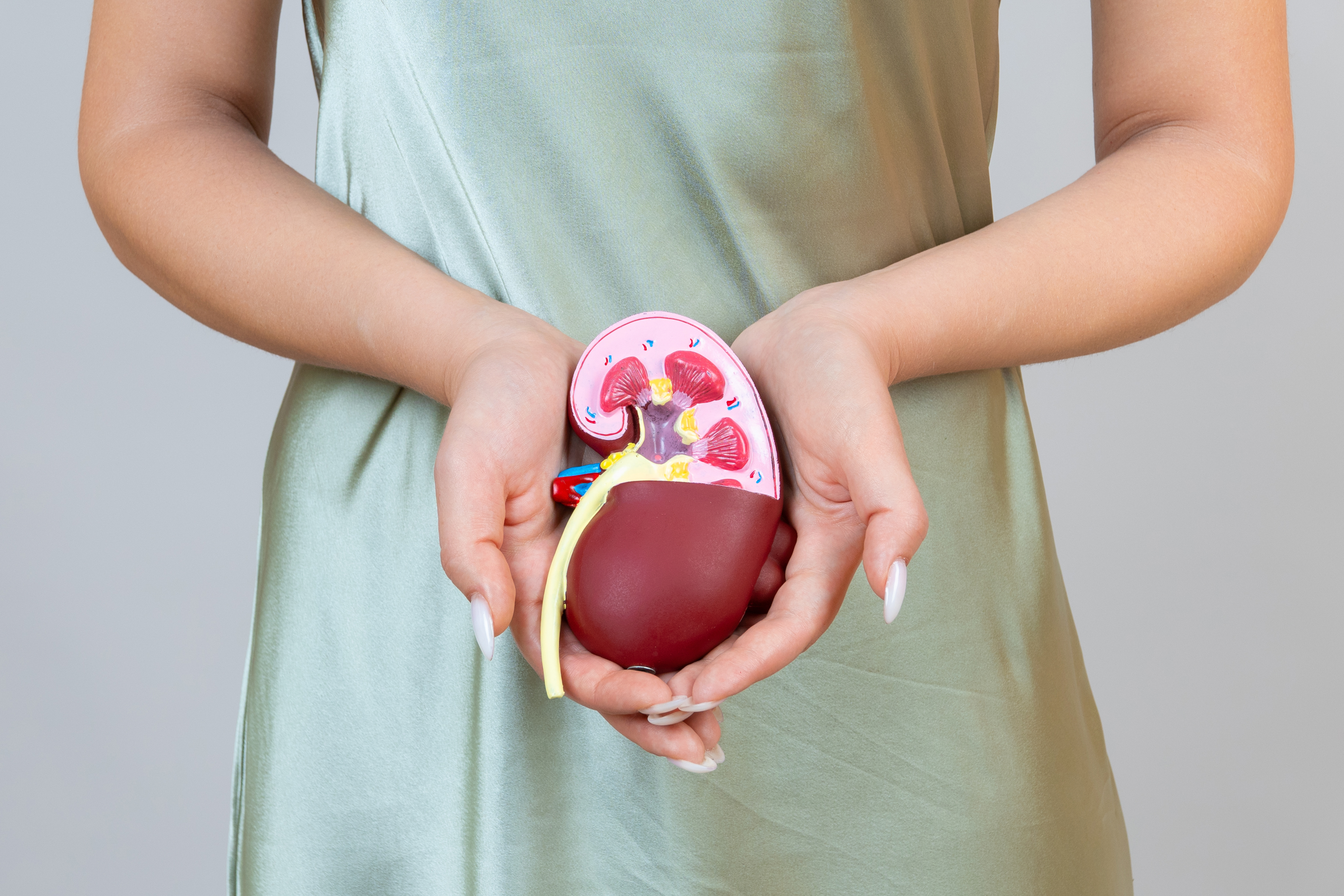What are the skin symptoms of kidney failure?


The kidneys are two reddish-brown organs located in the retroperitoneal space. Kidneys receive blood from renal arteries and blood exists in the renal veins. Each kidney is attached to a ureter that carries urine to the bladder.
The kidney participates in the acid-base balance, formation of urine, hormone secretion, osmolality regulation, as well as blood pressure regulation.
According to WHO global data on kidney disease (2019), kidney diseases were the 8th leading cause of mortality in high-income countries. About 1.3 million people died worldwide in 2019 due to chronic kidney diseases (WHO report). As per the National Kidney Foundation of the US, 21963 Americans received a kidney transplant in 2020, whereas over 100,000 people were on the waiting list.

Having kidney failure means that almost 80-90% of kidney function is diminished. Hypertension and diabetes mellitus are the two most common causes of kidney failure. Kidney failure is a result of long-term gradual loss of kidney function. It is also known as acute renal failure and it can develop rapidly. Acute kidney failure might happen due to some drug overdose, toxins, or blunt trauma. When kidneys fail, wastes and excess fluid build up in the body resulting in severe symptoms.
Some major symptoms of kidney failure are swelling of feet or ankles, muscle cramps, weakness, poor appetite, and weight loss. In the early stages of kidney disease, symptoms may not be visible on the skin but as the disease progresses to kidney failure various symptoms can be seen on the skin. A kidney blood test can be done to diagnose kidney problems.
In total there are 5 stages of chronic kidney disease (CKD).
Mild damage is done to your kidneys. They still function as normal and you may not have any symptoms of renal disease. Though you might have other signs of kidney damage.
Mild damage is done to your kidneys, but they still function well. Symptoms of renal disease may not show at this stage. You may develop physical signs of damage to your kidneys.
Mild to moderate damage is done to your kidneys and you now start to show some signs of renal damage. Your kidneys do not work as well as they should to filter waste out of your blood. You might start to show health problems such as weakness, fatigue and swelling.
Moderate to severe damage has been done to your kidneys and they no longer function well. They are unable to filter waste out of your blood as effectively as they should leading to a build-up in your body. You will have symptoms such as high blood pressure, swelling in your hands and feet or pain in your lower back. This is the final stage before failure.
You are now experiencing renal failure or close to it. Your kidneys are unable to function and have stopped filtering waste out of your blood. This can and will make you very sick and cause health problems. You are at end-stage kidney disease and will likely be on dialysis or need a transplant in order to survive.

Swelling
Kidneys remove extra fluid and salt from our bodies. When they are not functioning properly fluids start to build up in our bodies. Swellings may occur in our legs, ankles, feet, hands, and faces.
Colour changes to the skin
When kidney function diminishes, toxins build up in the body. This build-up may cause colour changes to the skin. Some common changes include an unhealthy pale colour, areas of darkened skin, a grey or yellow hue, etc.
Extremely dry skin
Extremely dry skin is common in people who require dialysis or kidney transplant. Skin becomes rough, scaly, and cracks easily.
Extremely itchy skin
Extremely itchy skin is one of the most common symptoms of kidney failure or advanced kidney disease. You might feel itchy in one area of the skin or spread across most of the body parts.
Scratch marks
When we scratch often because of itchy skin it easily leaves scratch marks. One can develop sores, bleeding skin, or bumps because of scratches.

Colour changes in nail
People with kidney failure can develop half-and-half nails. Half of the nail is a reddish brown colour and half is white in colour.
Rashes
When kidney function diminishes, toxins build up in the body and rashes develop. Small, dome-shaped itchy bumps appear on the skin of kidney failure patients. Sometimes, those itchy bumps join together to form raised patches.
Blisters
People with kidney failure might develop blisters on their hands, faces, or feet. The blisters gradually open, dry up and scars appear.
Calcium deposits
When kidney function diminishes calcium deposits develop around a joint or under the skin. In general calcium deposits are not painful. However, calcium deposits around the fingertip can cause great pain
Taking care of the kidneys ensures the proper functioning of multiple body systems. So getting a kidney blood test is always beneficial that helps prevent chronic kidney disease in the long run. A kidney blood test is a fast and effective diagnostic procedure that lets one know the current condition of their kidneys, promoting preventive measures for a healthy kidney.
Plus get the inside scoop on our latest content and updates in our monthly newsletter.